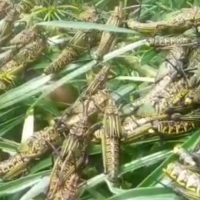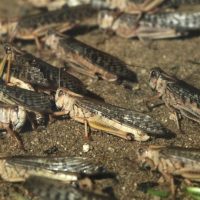The invasion of the fall armyworm also known as spodoptera frugiperda was first reported in Burundi in February 2016 in Cibitoke province. This species attacks cereals such as maize, sorghum and beans that are widely consumed in Burundi. The ministry of agriculture intends to hold a sensitization campaign on strategies to combat this invasive species.

Alexis Mpawenimana: “Crop rotation is one of the strategies that can help combat spodoptera frugiperda”.
After the invasion of spodoptera frugiperda was reported in Burundi, a commission of researchers and experts was set up to study what this species is about and how it should be combatted. The team came up with the idea to use pesticides that they were using for other insects invasion. Alexis Mpawenimana, researcher in agricultural anthology at the Institute of Agricultual Sciences in Burundi (ISABU) and a member of the team of researchers says this was adopted as an urgent measure but adds that the team continues with further researches. “After this insect invasion was reported in Cibitoke western province, the urgent solution was to use usual pesticides to stop the damages,” he says adding that research is on for an effective solution.
Mr Mpawenayo says farmers should adopt preventive solutions. Crop rotation is one of the strategies that can help fight against spodoptera frugiperda that mostly attacks maize which is among crops that are mostly cultivated in Burundi. “Instead of cultivating the same crop, farmers should grow something other crops to chase these fall armyworms.” he says.
He also says the sensitization is of paramount importance. “Many people haven’t yet known what the fall armyworms are. This means that when the larvae attack the crop, farmers know it late, what causes resistance of the armyworms”.
Diomède Ndayirukiye, assistant to the minister of Agriculture says the ministry is cooperating with partners to fight against this species that ravages crops. “The ministry is cooperating for researches, early warning and other strategies so as to eradicate this species”.
Armyworm larvae cause damage by consuming foliage. Young larvae initially consume leaf tissue from one side, leaving the opposite epidermal layer intact. By the second or third instar, larvae begin to make holes in leaves, and eat from the edge of the leaves inward. Older larvae cause extensive defoliation, often leaving only the ribs and stalks of corn plants, or a ragged, torn appearance.



















 IWACU Open Data
IWACU Open Data

